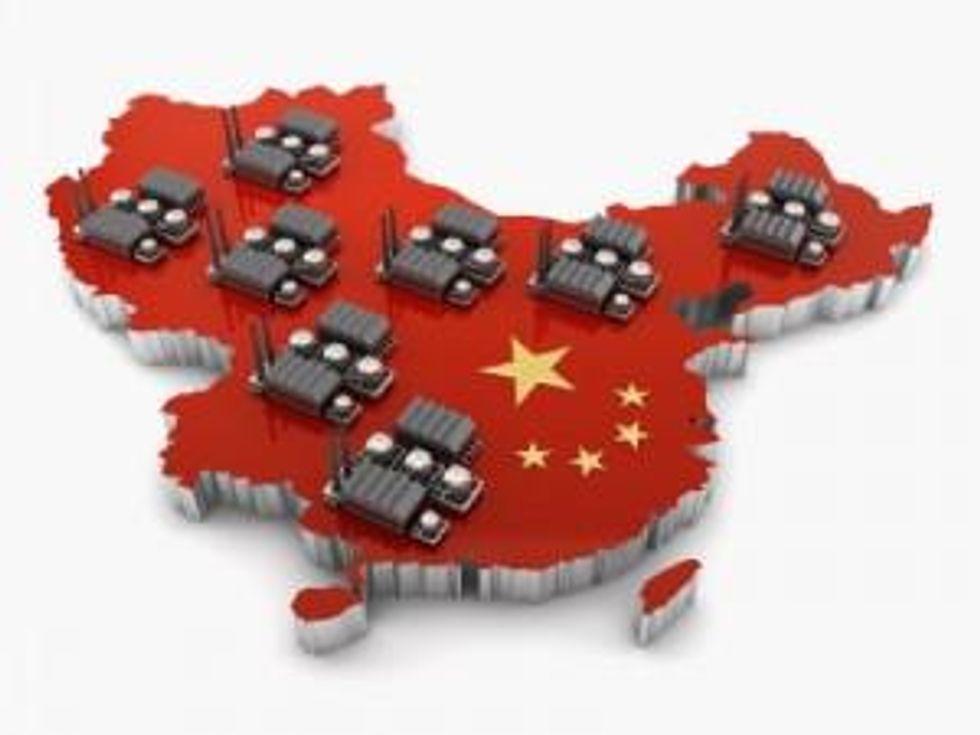A report indicating that China has started stockpiling rare earths for strategic reserves has piqued investor’s concerns over Beijing’s control of the rare earth market.

It was a quiet week on the pricing front, but China still managed to snag headlines and pique investor interest in the rare earths market.
A state-backed newspaper revealed that China has started stockpiling rare earths for strategic reserves in a move that may once again raise concerns over Beijing’s control of the rare earth element (REE) market.
The announcement comes days after the Information Office of the State Council published the country’s first ever white paper outlining its national rare earth industry.
The report confirmed that China had already begun the purchase and storage of REEs, but did not outline exactly when the initiative was launched. State funds will be used to supplement companies that help secure the resources and 11 mining zones have been allocated to the project.
Last month, the REE mining giant announced its intention to build a strategic reserve system, but had not publicly confirmed that it had started stockpiling until now. The newspaper added that weak prices for REEs prompted the move and that reserves could be used to address future shortfalls.
The move to stockpile rare earth elements will add to investor worries that China is pursuing a backdoor strategy of hoarding the metals in order to influence their prices. China’s policy of restricting REE exports has already prompted complaints to the World Trade Organization that China is trying to deliberately inflate prices.
Some speculators argue that China’s goal is to create the ultimate monopoly by driving up export costs to the point that manufacturers are forced to relocate their facilities to the People’s Republic.
Japan’s first large scale REE deposit
Earlier this month, a team of researchers from Tokyo University claimed to have discovered a 6.8 million ton REE deposit in an area near Minamitorishima Island in Japan’s exclusive economic zone. Professor Yasuhiro Kato told media sources that he estimated that the deposit, located 5,600 meters beneath the seabed, hosts enough dysprosium, used in lasers and commercial lighting, to satisfy Japanese demand for the next 400 years.
According to the team, REEs with an average concentration ranging from 1,000 parts per million (ppm), or 0.1%, to as high as 1,700 ppm, were found and it estimates that beds of mud containing REEs are spread over an area as wide as 1,000 square miles.
“I would like to see the Japanese government recognize the existence of the rare earth deposits and soon start making in investment in developing the area,” said Kato. “We can start drilling in the mud, using oil extraction technology, within three years at the earliest and start producing rare earth minerals within five years.”
Japan’s Minister of Economy, Trade and Industry Yukio Edano responded by stating: “This is welcome news. But the professor also says that a more detailed survey is necessary and that technology has to be developed to make commercial development possible.”
The discovery would be the first large-scale rare earth deposit in Japan.
Was Molycorp acquisition poorly timed?
Michael Gambardella, an analyst at JPMorgan (NYSE:JPM), has questioned the timing of US-based Molycorp’s (NYSE:MCP) takeover of Canadian rare earth processor Neo Material Technologies (TSX:NEM), that created an integrated mine-to-magnets rare earth company.
He noted that since March 31st, export prices have dropped for key metals such as cerium (down 11 percent), lanthanum (down 9 percent), and neodymium (down 26 percent) which raises questions about whether Molycorp overpaid in the deal.
“While Q2 is typically stronger than Q1 from a seasonal perspective and lower prices for rare earths should be helping demand, rare earth prices have not seemed to benefit from either of these potential catalysts,” he wrote in a note.
Gambardella added that while the acquisition gives Molycorp a large base in China, he felt that the price of the takeover may turn out to be too high if the market becomes oversupplied and prices keep plunging. He lowered his price target on Molycorp to $19.50 a share from $23, and maintained a neutral rating.
Company News
Mkango Resources Ltd. (TSXV:MKA) announced that the results for five holes from its second phase drilling program at its Songwe project, located in Malawi, include 95.8 meters grading 1.7% total rare earth oxide (TREO), 100.8 meters grading 1.7% TREO, and 332.7 meters grading 1.4% TREO.
According to a press release, all holes from Stage 2 have intersected broad zones of rare earth mineralization and mineralization occurs at surface in broad outcropping zones of carbonatite on the northern slopes of Songwe hill and extends to a vertical depth of at least 350 meters.
U.S. Rare Earths, Inc. (OTCBB:UREE), announced details of its 2012 drill program. The program will focus on the company’s properties at Diamond Creek, Lemhi Pass and North Fork in Idaho in 2012. In late 2012 and 2013, the company will focus on the Sheep Creek and Last Chance properties in Montana.
“With the recent reports of China now moving to stockpile a critical group of Heavy Rare Earths, U.S. Rare Earths is aggressively entering into a drill program to explore its properties for a reliable domestic source of light and heavy rare earths, with our primary focus on the heavy rare earth elements,” said CEO Michael D. Parnell.
Avalon Rare Metals Inc. (TSX:AVL) reported an updated resource estimate for its Nechalacho Deposit. Analysts estimated measured mineral resources of 8.90 million tonnes grading 1.64% TREO and 21.7% Heavy Rare Earth Oxide (HREO)/TREO using the base case $260/ton Net Metallurgical Return (NMR) cut-off for the key Basal Zone part of the deposit.
The updated resource estimate for the Basal Zone has also resulted in an increase in the total indicated mineral resources in the deposit to 63.76 million tons, grading 1.52% TREO with 21.41% HREO/TREO.
Securities Disclosure: I, Adam Currie, hold no direct investment interest in any company mentioned in this article.